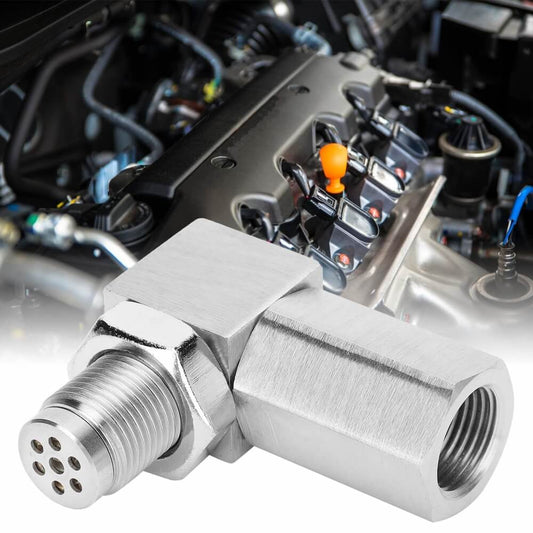Will o2 sensor spacer pass emissions?
Share

In the context of vehicle exhaust system modifications, car owners often face a critical question: how to ensure that their vehicles meet personalized needs while also successfully passing emission tests? This is where our product, the mini catalizador, a mini catalytic converter-integrated O2 sensor extender, becomes the ideal solution to this dilemma.
The mini catalizador is not just an ordinary oxygen sensor extender; it incorporates advanced mini catalytic converter technology that effectively resolves the Check Engine Light (CEL) issues triggered by changes in the exhaust system. When significant alterations occur, such as the removal or replacement of the catalytic converter, the oxygen sensor may receive inaccurate readings, leading to the CEL being activated. The mini catalizador, with its built-in catalytic components, simulates some of the functions of the original catalytic converter, effectively purifying harmful substances in the exhaust and reducing false alarms, ensuring stable vehicle operation.
Working Principle of the Mini Catalizador
The mini catalizador achieves a dual effect by repositioning the oxygen sensor and incorporating a small catalytic element. It adjusts the relative position between the oxygen sensor and the exhaust flow, minimizing the direct impact of exhaust gas on the sensor readings. At the same time, the built-in mini catalytic converter can partially clean the exhaust gases, reducing pollutant emissions and preventing CEL issues caused by exceeding emission limits.
Impact on Emission Testing
While the mini catalizador can address CEL issues, car owners should remain aware of its impact on emission tests. Emission tests typically include the detection of various pollutants, such as carbon monoxide, hydrocarbons, and nitrogen oxides. Although the mini catalizador can simulate some of the effects of a catalytic converter, its purification capability may not completely match that of the original catalytic converter. Therefore, the actual emissions of the vehicle during testing may still be somewhat affected.
However, for most lightly modified vehicles, the mini catalizador is generally sufficient to meet everyday emission testing requirements. It can significantly reduce emission problems arising from exhaust system modifications, helping car owners successfully pass emission tests.
The Best Way to Achieve Emission Compliance
To ensure that vehicles consistently meet emission regulatory requirements, car owners should also pay attention to the following points when using the mini catalizador:
1. Understand and Comply with Local Regulations: Before modifying a vehicle, thoroughly research and adhere to local emission regulations to ensure that all changes comply with legal requirements.
2. Choose High-Quality Products: The quality of the mini catalizador directly affects its performance and longevity. Therefore, car owners should select reliable, high-performance products, such as our mini catalizador.
3. Regular Maintenance: Conduct regular maintenance on the vehicle's emission control system, inspecting and replacing aging components to maintain optimal performance.
4. Professional Calibration: If necessary, seek assistance from professional technicians for tuning and optimization during the modification process to ensure optimal vehicle performance.
Conclusion
The mini catalizador, as an O2 sensor extender with an integrated mini catalytic converter, effectively resolves the CEL issues triggered by exhaust system modifications. Its unique design and excellent performance have earned the favor of many car owners. However, users must also be mindful of its impact on emission testing and take appropriate measures to ensure that their vehicles consistently comply with emission regulations. By doing so, we can collectively create a cleaner and more environmentally friendly travel environment.





